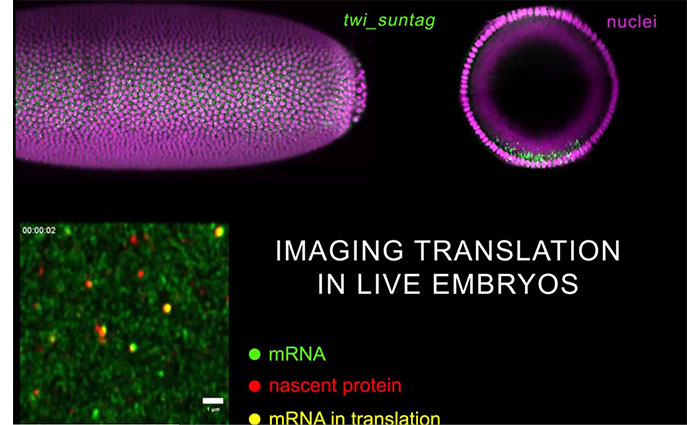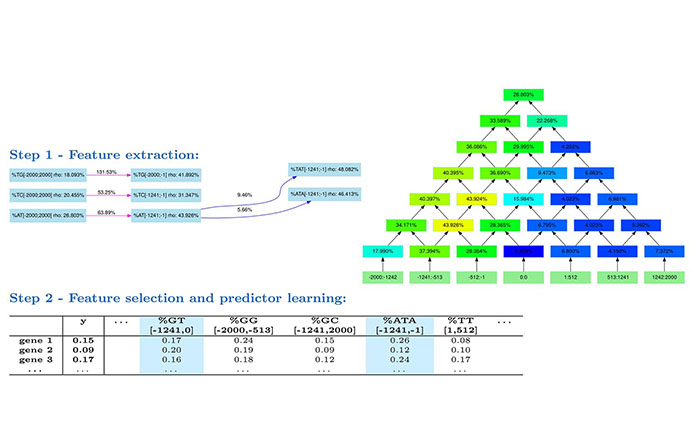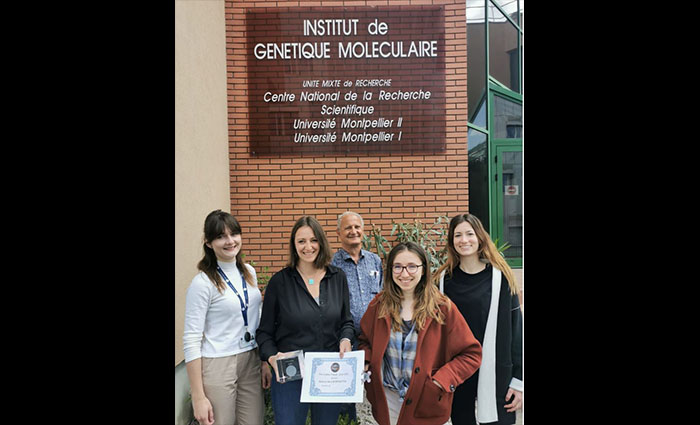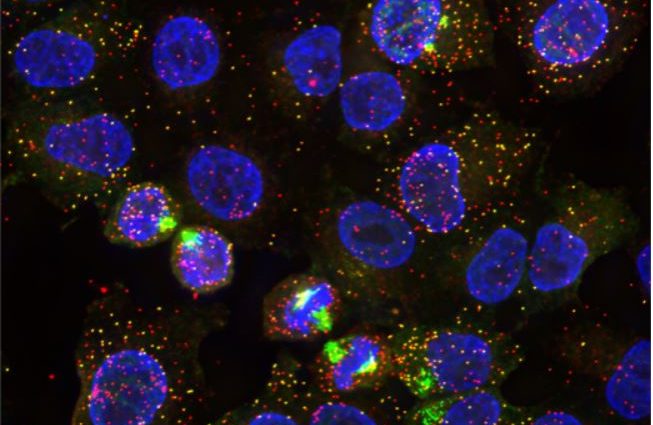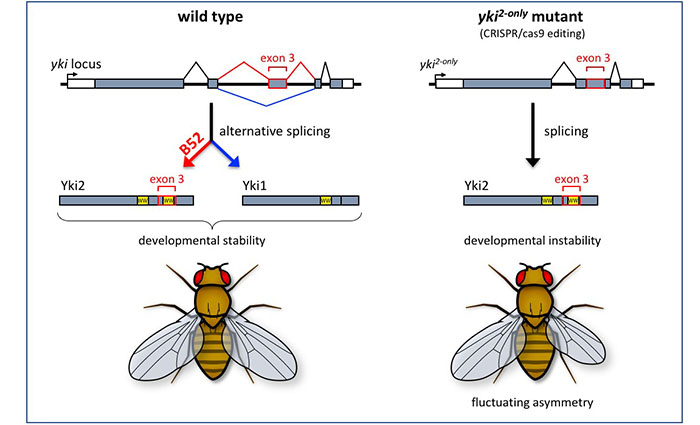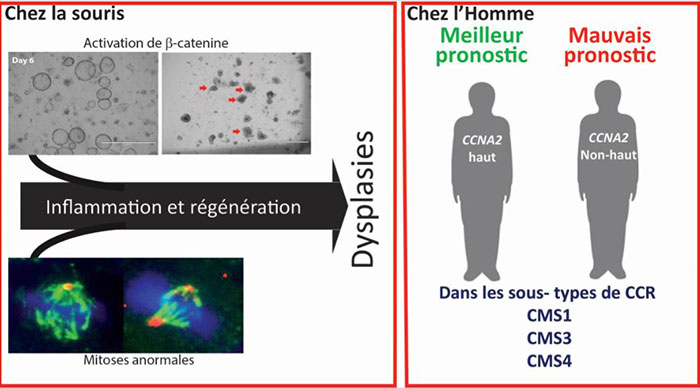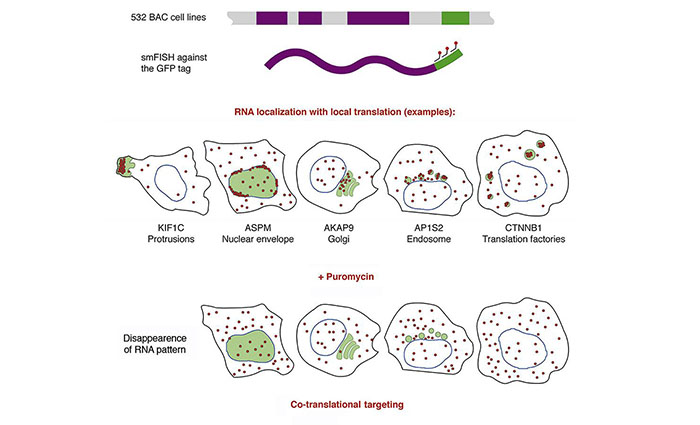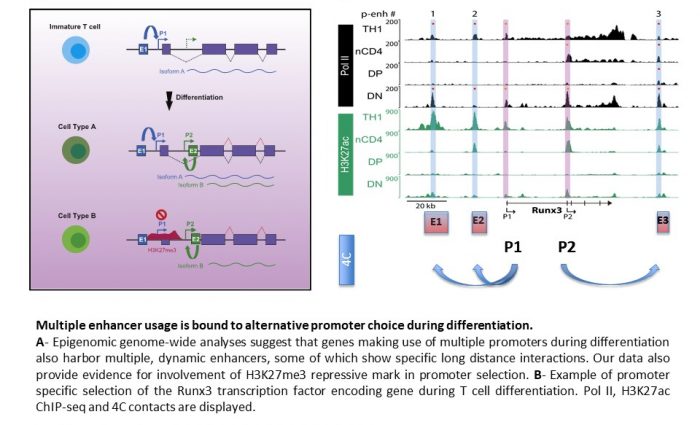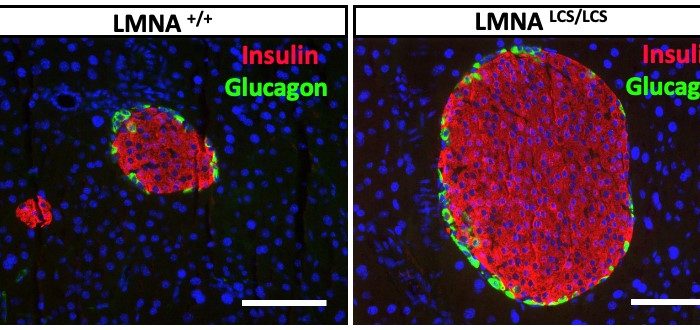Science
Modulation of Yorkie activity by alternative splicing is required for developmental stability
The Hippo signaling pathway is a major regulator of organ growth, which controls the activity of the transcription coactivator Yorkie (Yki) in Drosophila and its homolog YAP in mammals. Both Yki and YAP proteins exist as alternatively spliced isoforms containing either one or two WW domains. The biological importance of this conserved alternative splicing event is unknown. Here, we identify … Continue reading Modulation of Yorkie activity by alternative splicing is required for developmental stability
A Dual Protein-mRNA Localization Screen Reveals Compartmentalized Translation and Widespread Co-translational RNA Targeting
Local translation allows spatial control of gene expression. Here, we performed a dual protein-mRNA localization screen, using smFISH on 523 human cell lines expressing GFP-tagged genes. 32 mRNAs displayed specific cytoplasmic localizations with local translation at unexpected locations, including cytoplasmic protrusions, cell edges, endosomes, Golgi, the nuclear envelope, and centrosomes, the latter being cell-cycle-dependent. Automated classification of mRNA localization patterns … Continue reading A Dual Protein-mRNA Localization Screen Reveals Compartmentalized Translation and Widespread Co-translational RNA Targeting
Alternative Enhancer Usage and Targeted Polycomb Marking Hallmark Promoter Choice during T Cell Differentiation
During thymic development and upon peripheral activation, T cells undergo extensive phenotypic and functional changes coordinated by lineage-specific developmental programs. To characterize the regulatory landscape controlling T cell identity, we performed a wide epigenomic and transcriptional analysis of mouse thymocytes and naive CD4 differentiated T helper cells. Our investigations reveal a dynamic putative enhancer landscape, and we could validate many … Continue reading Alternative Enhancer Usage and Targeted Polycomb Marking Hallmark Promoter Choice during T Cell Differentiation
Lamin C counteracts glucose intolerance in aging, obesity and diabetes through β-cell adaptation
Aging-dependent changes in tissue functions are associated with the development of metabolic diseases. However, the molecular connections linking aging, obesity and diabetes remain unclear. Alternative RNA processing of the Lmna gene produces distinct protein isoforms, lamin A, lamin C and progerin that have antagonistic functions on energy metabolism and lifespan. In a previous study, we showed that the lamin C … Continue reading Lamin C counteracts glucose intolerance in aging, obesity and diabetes through β-cell adaptation



